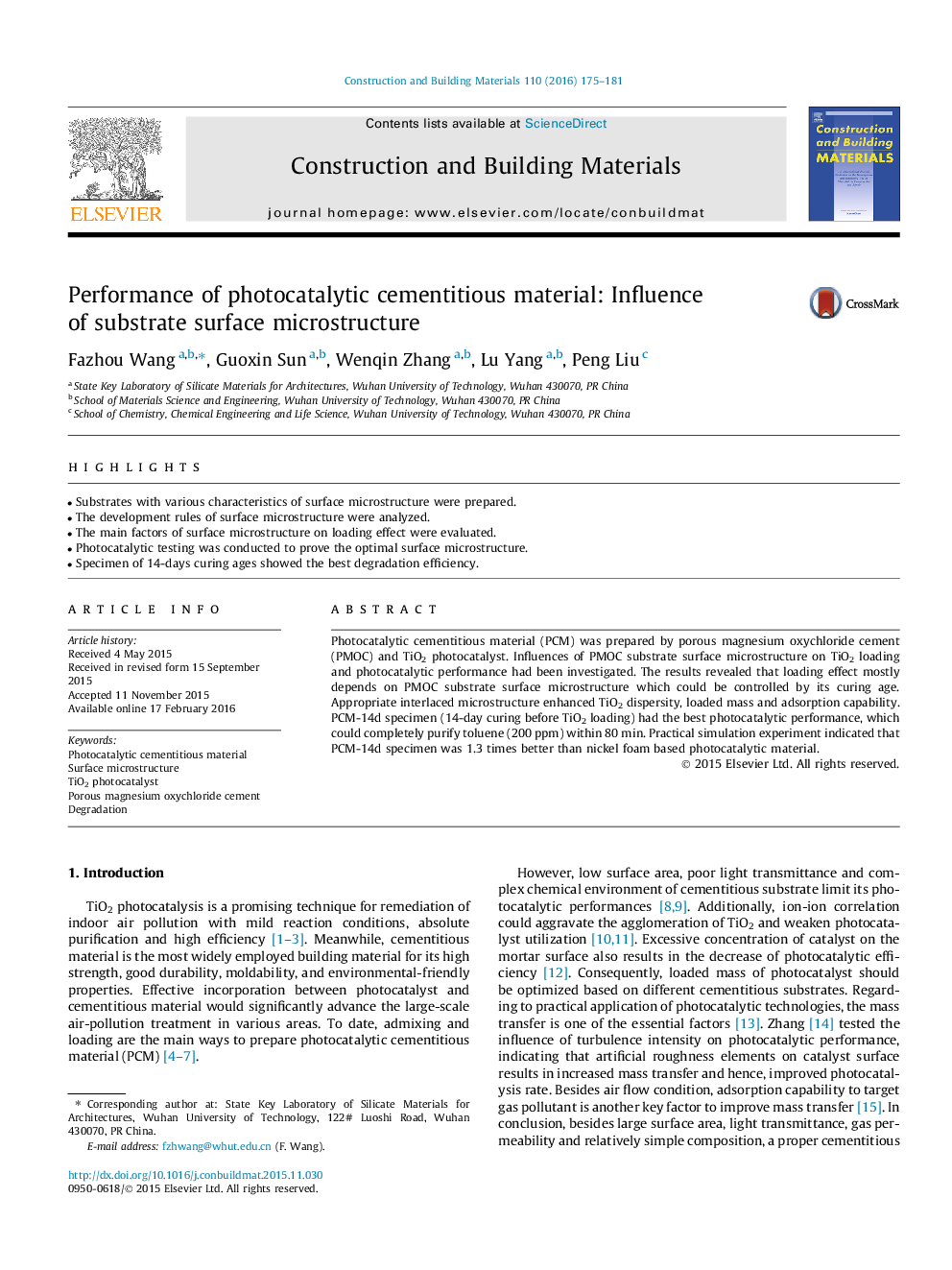| Article ID | Journal | Published Year | Pages | File Type |
|---|---|---|---|---|
| 256073 | Construction and Building Materials | 2016 | 7 Pages |
•Substrates with various characteristics of surface microstructure were prepared.•The development rules of surface microstructure were analyzed.•The main factors of surface microstructure on loading effect were evaluated.•Photocatalytic testing was conducted to prove the optimal surface microstructure.•Specimen of 14-days curing ages showed the best degradation efficiency.
Photocatalytic cementitious material (PCM) was prepared by porous magnesium oxychloride cement (PMOC) and TiO2 photocatalyst. Influences of PMOC substrate surface microstructure on TiO2 loading and photocatalytic performance had been investigated. The results revealed that loading effect mostly depends on PMOC substrate surface microstructure which could be controlled by its curing age. Appropriate interlaced microstructure enhanced TiO2 dispersity, loaded mass and adsorption capability. PCM-14d specimen (14-day curing before TiO2 loading) had the best photocatalytic performance, which could completely purify toluene (200 ppm) within 80 min. Practical simulation experiment indicated that PCM-14d specimen was 1.3 times better than nickel foam based photocatalytic material.
